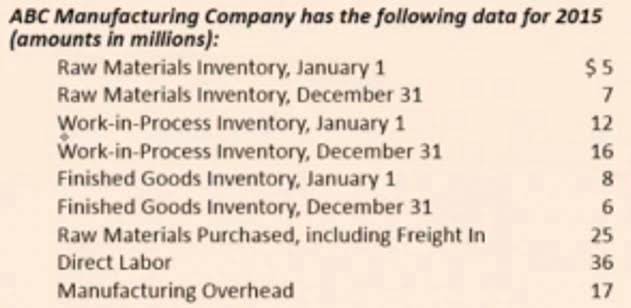
Using the return on equity ratio, equity investors can determine the return the company made on their equity investment (ROE). In essence, a company’s net income is divided by the equity of its shareholders to calculate its return on equity. Shareholders’ equity is significantly influenced by the total number of outstanding common shares of a firm, including restricted shares allocated to insiders, corporate officers, and the general public.
Treasury Stock

And when it stays negative for long, the company can face financial trouble. It’s the amount left for shareholders when the company sold everything and paid off all debts. Financial experts use it to check how well a company is doing financially, which helps calculate different ratios that show a company’s financial health. Return on Equity (ROE) is the measure of a company’s annual return (net income) divided by the value of its total shareholders’ equity, expressed as a percentage (e.g., 12%). Alternatively, ROE can also be derived by dividing the firm’s dividend growth rate by its earnings retention rate (1 – dividend payout ratio).

Book Value of Equity vs. Market Value of Equity: What is the Difference?
We can use this information to guide our own individual investment decisions while keeping in mind various debt and equity products. Although a lot of investment choices are based on the amount of risk we are willing to face, we cannot ignore all the important factors mentioned above. Lastly, if the firm’s financial leverage increases, the firm can deploy the debt capital to magnify returns. DuPont analysis is covered in detail in CFI’s Financial Analysis Fundamentals Course. income statement If the net profit margin increases over time, then the firm is managing its operating and financial expenses well and the ROE should also increase over time.
How to calculate shareholders equity
In exchange for the preferential treatment of dividends, preferred shareholders usually will not share in the corporation’s increasing earnings and instead receive only their fixed dividend. Stockholders’ equity is the amount of assets remaining in a business after all liabilities have been stockholders equity formula settled. It is comprised of common stock, preferred stock additional paid-in capital, retained earnings, and treasury stock.
B. Impact on investment decisions

The stockholders’ equity is only applicable to corporations who sell shares on the stock market. For sole traders and partnerships, the corresponding concepts are the owner’s equity and partners’ equity. Dividend recapitalization—if a company’s shareholders’ equity remains negative and continues to trend downward, it is a sign that the company could soon face insolvency.
- Retained earnings are not paid out to a company’s shareholders as dividends but are instead reinvested to propagate the company’s growth.
- The higher the D/E ratio, the more investors may be concerned of the company’s financial health and overall indebtedness.
- There are four key dates in terms of dividend payments, two of which require specific accounting treatments in terms of journal entries.
- Share capital or contributed capital represents the total financing or value received from the company’s shareholders in exchange for issuing common shares or preferred shares.
- It also elaborates on the shareholders’ equity formula so that you can calculate it quickly and conveniently.
- The fundamental accounting equation is the quickest and easiest way to determine shareholders’ equity.
- An incomplete understanding of a company’s value and potential would be the result of failing to analyze these elements.
How is the balance sheet valuable formula for financial analysis?
All of these factors, including dividends, long-term liabilities, market value of equity, and assets, are ignored by many investors who only analyze the total shareholders’ equity. There are also insights that each component provides on the company’s financial structure and performance. An incomplete understanding of a company’s value and potential would be the result of failing to analyze these elements. A class of corporation stock that provides for preferential treatment over the holders of common stock in the case of liquidation and dividends. For example, the preferred stockholders will be paid dividends before the common stockholders receive dividends.
- Share Capital (contributed capital) refers to amounts received by the reporting company from transactions with shareholders.
- In this scenario, ROCE would increase by a fair margin since the amount of outstanding common equity has not changed, but net income has increased.
- The bottom line is that SE represents the remaining value of a company’s assets after subtracting all its liabilities.
- The second equation for shareholders’ equity is sometimes known as the investors’ formula because it is used specifically by current or potential investors to assess the financial health of the company.
- APIC benefits the company by providing additional funds without incurring debt, but it doesn’t give individual investors any additional shares or power beyond their total investment purchases.
What is common shareholders equity
To arrive at the total shareholders’ equity balance for 2021, our first projection period, we add each of the line items to get to $642,500. Now that we’ve gone over the most frequent line items in the shareholders’ equity section on a balance sheet, we’ll create an example forecast model. Company growth or a higher ROE doesn’t necessarily get passed onto the investors however. If the company retains these profits, the common shareholders will only realize this gain by having an appreciated stock. As discussed above, the ratio can be used to assess future dividends and management’s use of common equity capital. The book value of equity is a key accrual accounting metric that is calculated by factoring in historical data.

The accounting term that means an entry will be made on the left side of an account. A record in the general ledger that is used to collect and store similar information. For example, a company will Online Bookkeeping have a Cash account in which every transaction involving cash is recorded. A company selling merchandise on credit will record these sales in a Sales account and in an Accounts Receivable account. Sales are reported in the accounting period in which title to the merchandise was transferred from the seller to the buyer. To see a more comprehensive example, we suggest an Internet search for publicly-traded corporation’s Form 10-K.
